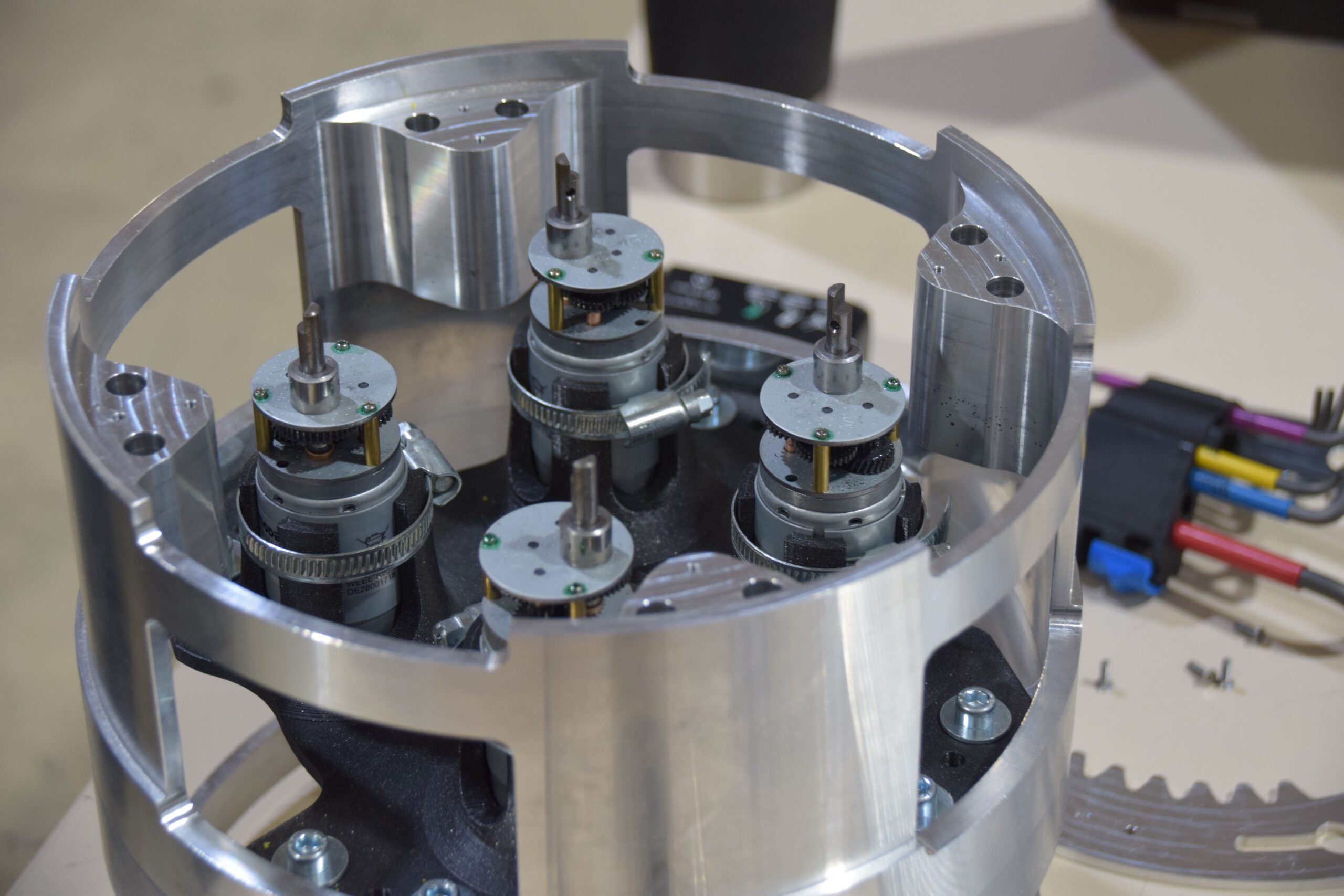Recovery
Who we are and what we do:
We deal with everything that makes sure our rocket has a soft touchdown and will be recovered after our mission. To achieve this goal we are working mainly on two systems: the separation system and the parachute system.
The separation system is the connecting interface between our booster stage and our nosecone. It enables the separation at apogee by only using electrical and mechanical system. On the other hand our parachute system is attached to the rocket to allow a safe descent back to earth. It also mainly uses electrical and mechanical components to deploy our smaller drogue parachute and the bigger main parachute.
Currently our team is refining our parachute system and dealing with our separation system, what allows us to provide a variety of different tasks. The topics we deal mostly with are Mechanical Engineering, designing our own parts in CAD software, 3D-printing our own parts, Python-simulations of our decent through the atmosphere, Writing documentation for our reviews and tests and some electrical engineering for test setups.
Our project is split into four main phases: In Phase A and B we have been dealing with concept development and then planning our systems in detail.
So far for development of our rockets Transcendence and Phoenix we have passed the preliminary design review at the end of phase B with our system plan and now are in phase C, where we mainly build prototypes, test them and refine our design. We already have built together with the Avionics and Aerodynamics teams two fully nosecone assemblies and tested one of them in December 2022 during a 600m drop test, what ended up being partially successful. During this test we dropped the nosecone from a height of 600m out of a small plane to test the parachute deployment triggering and behaviour in the decent. To get more insights feel free to watch our detailed video about this test:
https://youtu.be/kK8NnmIiw7w?si=trG9Ou9LVLTtTzVi
In order to successfully participate in EUROC we are designing a pressure driven separation and parachute deployment system.
If you are hooked about the stuff we do and want to contribute yourself, the Recovery Team of ASTRA invites you to join!
A few ASTRAnauts introduce themselves

Hey,
my name is Alexander and I have been part of the recovery team of ASTRA for about half a year. I’m currently studying environmental physics here at the University of Bremen. In my free time I engage in different sports, enjoy reading, and tinker with different projects. Working in ASTRA’s recovery department brought me many insights in production and prototyping, while designing parts for our system. Common activities include: modelling components, preparing and executing 3D – Prints and engaging in weekly team meetings. I particularly enjoy getting hands on practical experience in these fields and at the same time, working in a cooperative environment.
Heyo,
I am Daniel, and I am part of ASTRA’s recovery team. I’m currently studying physics at the University of Bremen, and my first goal is to earn a Bachelor of Science in that subject. Besides studying, I travel around in my free time, connect with people, and spend time with my friends. The reason why I joined ASTRA is pretty simple: Rockets are cool. I also want to work in the future in the field of aerospace, and joining ASTRA might be a step in that direction.

If you find this project as intriguing as we do, join our team by clicking on the button below.



